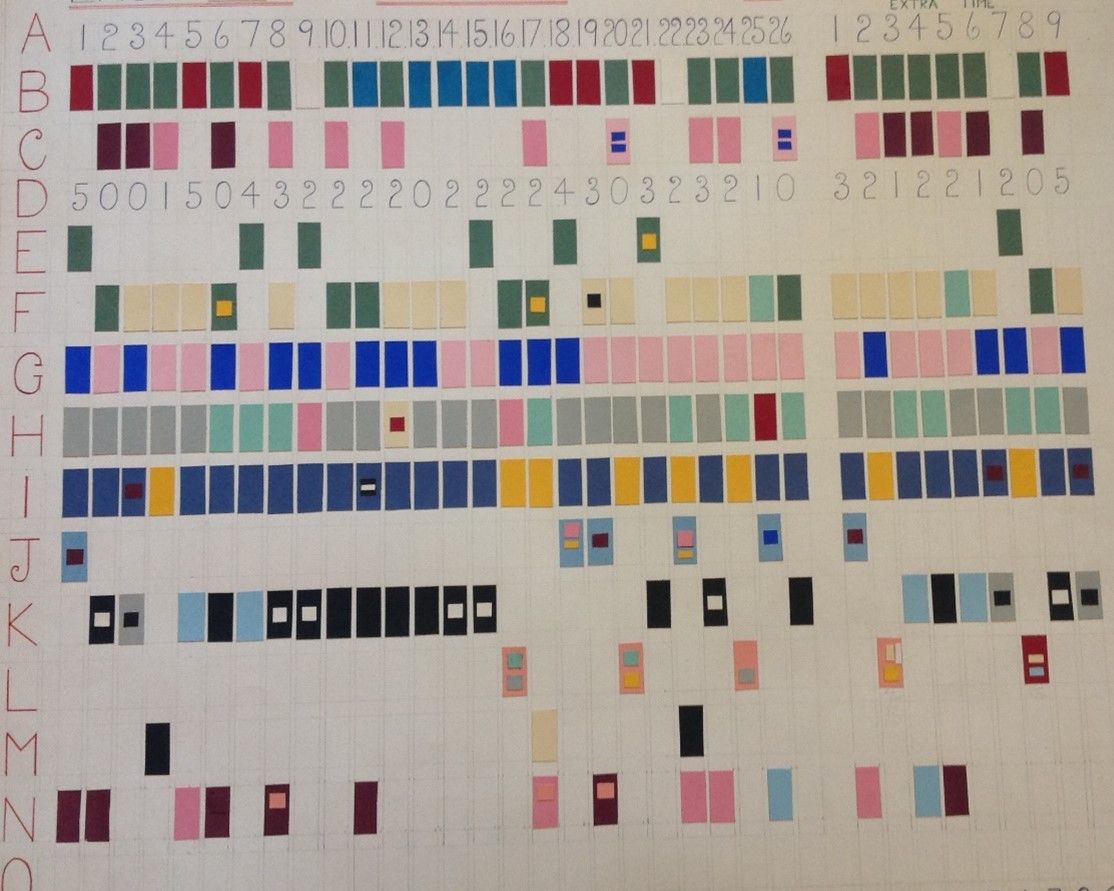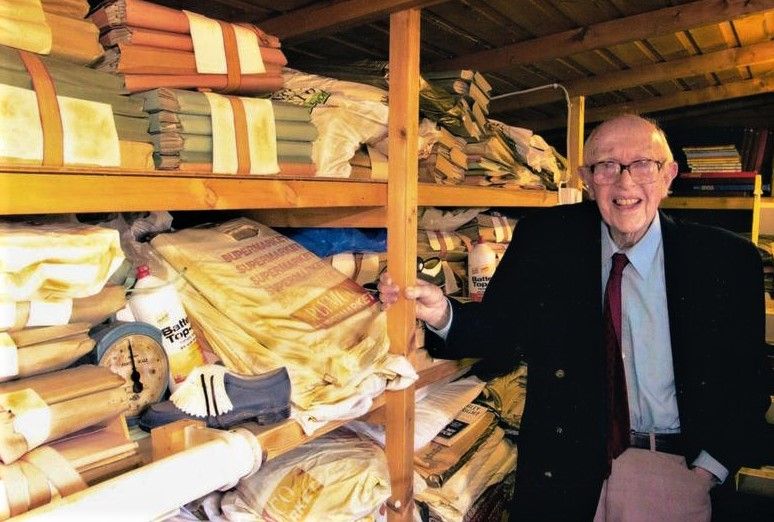The second part of a deep dive into the early usage of numbers and diagrams to analyse goalkeeper performance.
(The first part of the this article was published here, on April 5th 2023).
Crossing the ball into the box was used as the main attacking tool for most teams in the 1960s. English football analyst Charles Reep, credited with inventing the English ‘long ball game', spent a lot of time analysing this method of attack and how to defend against it. Goalkeepers needed to be confident in the air, especially as they were afforded little physical protection. Reep identified a total of 15 different types of ball into the box.
By the time of the 1966 World Cup, he was producing large, hand-made, card graphics to illustrate this. Below is one of his charts of England’s crosses in the 1966 final against West Germany:

This wonderfully evocative graphic can be deciphered to see whether a cross came from the left or right, the angle it was delivered from, was it long, medium, or short, on the ground or in the air, whether it reached an attacker, did a defender intervene, did the goalkeeper make contact and if so, how – a catch, a tip, or a punch?
While Reep churned out an amazing amount of data and went off exploring new and interesting areas, few in the mainstream were interested in what he was doing.
The game was changing and by the next World Cup the era of goalkeepers punting the ball downfield had, briefly, been superseded by a more thoughtful approach. For example, a study was made of the England v West Germany quarter-final rematch at the Mexico World Cup in 1970.
During the first 90 minutes, Peter Bonetti took 14 of 16 goal kicks short to the edge of the area. When he had the ball in his hands he rolled or threw it out 13 times out of 15. This total of 27 short passes from 31 possessions (87%) compares very favourably with the data Reep had collected prior to the 1966 tournament.
Even when compared to recent data, this approach in 1970 was actually more possession-based than Jordan Pickford’s numbers at Euro 2020 – very few of his passes were short. His long ball distribution was dominant (he went this way over half of the time but gave away possession, likewise, over half of the time by this method.

However, the flat, dry pitches of Mexico were a stark contrast to the awful mud baths back home. As the 1970s rolled in to the 80s more teams chose to use long balls as a means to attack and several had the greatest season in their history. Watford, Cambridge United, Sheffield United, and Wimbledon were just some of these teams and the latter used these tactics to win the FA Cup.
The much discussed Wimbledon upset of Liverpool in the 1988 FA Cup Final was seen as a clash between football ideologies; the short-passing team versus the long-ball merchants. During the BBC commentary John Motson described it as the “Culture Club versus the Crazy Gang”. But it wasn’t that simple.
While Wimbledon were more likely to use the long ball as a percentage of their possessions, Liverpool actually went long more times than their opponents. In the first half alone the Reds tried 37 long passes to Wimbledon’s 26. The telling stat behind this is that while 70% of Wimbledon’s long passes found their man, only 41% of Liverpool’s were successful.
This can be traced back to the goalkeepers, much maligned in this era for just punting the ball down the pitch at every opportunity. In the first half Bruce Grobbelaar went long 17 times compared to Dave Beasant’s 18. It really was a long-ball era for all.
Cumbersome desktop computers were all the rage in the 1990s, as were chunky laptops. That did not stop Dutch coach Huub Stevens from lugging one around. He kept records of penalties in the Bundesliga (where he coached Schalke 04) and across Europe, gaining himself the moniker of the ‘Laptop Coach’.
In 1997, Schalke reached the UEFA Cup Final and faced Internazionale, winning 1-0 at home in the first leg before losing by the same score in Milan. The tie went to penalties which the Germans won 4-1 with goalkeeper Jens Lehmann more than prepared due to coach Stevens’ database of thousands of penalty kicks.
Ever since then, the footballing world has (slowly) been taking goalkeeper data more seriously. We now have more equality of data between positions as teams try to find the most marginal of gains anywhere they can. It is a trend that will only become more complex as the seasons pass and the stakes in professional football get ever higher.
On the other end of the timeline, Dr John Harrison and Goalkeeper xG utilise the most advanced goalkeeper statistical modelling techniques to help clubs recruit, improve, and produce better goalkeepers. Founded in 2022, they are the first goalkeeper-specific data consultancy in football. You can see our previous work here, and get in touch with Dr Harrison at [email protected].
Rob Haywood is the author of the forthcoming book Many Impossible Things: The Ingenious Evolution of Football Data.








